Cauliflower is a wonderful vegetable having an attractive appearance and endowed with a variety of useful properties. It is added to vegetable broths, soups, stew, roasting in a skillet, baked. For the winter, cauliflower can be frozen or together with cucumbers, carrots, a repressed (or family) onions and tomatoes to send to banks, pour a tasty fragrant marinade and roll. How to grow cauliflower on your own dacha? We will analyze the principles and nuances of its cultivation, introduce with interesting varieties.
Features of growing cauliflower
This representative of the cabin family is very different from their "relatives". Her Latin name sounds like Brasica Oleracea. This one-year culture has a basic compact root system, and the roots are located very close to the surface of the soil. At first, the plant grow elongated large blue-green or gray-based leaves with expressed in varying degrees of pigmentation, their number is from 20 to 25 pieces. Then the unusual modified inflorescence is beginning to be formed and forming, in which there are about two thousand small incar of the boutons, closely pressing together. These heads are then taken to prepare delicious dishes. Head weight ranging from 200 grams to two kilograms. There are varieties with larger "kochems". Most often, the head is whitish or with the presence of yellowish shades, but the varieties granted purple heads, pale-lilac, purple, orange, greenish, creamy.
In early varieties, the harvest can be cut out 80 days after seeding have been made. The heads in late satisfied varieties will be ready for a cut around 130 days.
The cold resistance of this type of cabbage is significantly less than that of those forms that are given by kochens. Seeds germinate only at a temperature of from 16 to 18 degrees. The optimal temperature for the active development of leaves and the formation of heads is from 18 to 22 degrees. If the summer is cold, the development of inflorescences is essential. If there is a hot weather for a long time, it also has a negative effect on the development of plants, the heads are formed small. If a few days the thermometer shows more than 28 degrees, then the inflorescence head can break down, and you will see the colorless shoots instead. Standingly hold out in such a long heat cauliflower can if high humidity is maintained in air and soil.
Cucumbers, beans, peas, roofs are the best predecessors for cauliflower. Do not put this cabbage every year on the same territory. You can return it to your former place only four years old. Another important point: Do not land this cabbage on those beds, in which last season you have "sat" repa, radish, radish.
For this cabbage, try to highlight a light place that does not shave the day. If landings are shaded (or thickened), such plants are usually drawn up, they are more susceptible to diseases. We have already mentioned that all the roots of this culture are placed in the upper layer of the soil, so the earth necessarily needs a fertile, from which it will get all the macro and trace elements necessary for the growth. In a subline soil before landing, the following components are made (per square meter):
- compost, overwhelmed for the year or two manure - about half of the Big Bucket;
- wood ash - big (faceted) glass;
- superphosphate - tablespoon;
- potash fertilizers - tablespoon.
It is desirable that the reaction of the soil medium is as close as possible to neutral. Therefore, for its adjustment, it is possible to make a dolomite flour or lime for its adjustment. If the cabbage was put on alkali or acidic soils, then there is a deformation point of growth, so the view of the plants is ugly.
If the cabbage lacks in the ground of the boron (this is noticed on turf-podzolic soils), then inflorescences are obtained by terry, and brown spots appear on the poor heads.
With a molybdenum deficiency (this is characteristic of acidic soils), the sheet plate becomes a thread-shaped structure.
When there is little magnesium in the soil, then the leaves are twisted, the structure of the structure becomes sticky, it contributes to the "scattering" of the heads.
If there is little copper in the soil (this happens on peatlands), then this leads to the appearance of chlorosis on the sheet plates.
In the middle lane, the cauliflower is desirable to grow, in a more favorable climate of the southern regions, another technology is also possible - reckless.
Color cabbage varieties
If you decide to try to plant a cauliflower, then first you need to purchase seeds in the store. At the first stage, we will help you decide on the variety. If you want to try this cabbage early, then choose early varieties: "Snow Ball", "Movir-74", Express "," Mushroom Early 1355 "," Alpha "," Belvedere F1 "," Tetris F1 "," Tsarevna ", "Gudman."
Associated varieties are matured from 120 to 130 days. For example, "Flora Blanca", "White Beauty", "Andes", "Amazing", "Guarantee", "Amethyst", "Dacnitsa", "Snowubol 123", "Fremont".
But the ripening of late satisfies will have to wait more than 130 days, so they are best to choose for cultivation in the southern regions. This applies to the following varieties: Cortes F1, "Amerigo F1", Skyvoker.
Let us dwell on the popular varieties:
- The "snow ball" will delight you with beautiful white heads, which have a neat round-flat shape, and an average weight from 600 to 850 grams. With good care and favorable conditions, 1200 grams weigh. We list the advantages of this variety:
- the ability to adapt to any weather conditions;
- resistant to diseases;
- early gives good yields;
- excellent taste.
- Express - gives yellowish-white heads weighing from 350 to 500 grams. Their form rounded. Cabbage delicious, resistant to bacteriosis. However, it is very loved by pests to preserve the harvest, it will have to be stolen.
- "Alpha" is often grown in the middle strip, the weight of her kochanov is an average of 1.5 kilograms.
- "Tetris F1" - this early variety has a raised socket consisting of bubble, a little wavy on the edge of the leaves whose color is gray-green, there is a small wax. The weight of the whitish head round-flat form is about 1600 grams.
- "Emerald" - the color of the round-green round-green head, and the weight is 1000 to 1300 grams. Delicious side dishes are obtained from this cabbage. Part of the crop can freeze.
- "Movir-74" is a hybrid forming rounded or rounded-flat heads, the diameter of which is from 12 to 25 cm, so their weight can be from 400 to 1400 grams. The surface of the head is buggy, and the painting is white or white-yellow. Advantages:
- shows the resistance to cold and heat;
- cabbage turns tasty, you can immediately use or preserve;
- maturing together;
- can give two harvest for the country season.
But there are cabbage and cons: often deteriorates with bacteriosis, requires persistent protection against annoying pests.
- "Goodman F1" - the fruits of this variety can already begin to cut 60 days after you landed the seedlings to the garden. The big plus is that the leaves themselves can carefully cover their heads.
- "White Beauty" - she has pure white, rounded heads whose average weight is 1200 grams. The color of the leaves is light green, they can also cover the head. It is valued for the excellent taste and abundance of minerals. This high-yielding grade can be cultured both in the open ground and with the help of the shelter. But there are disadvantages: often susceptible to disease and loved by pests.
- "Daccia" - the ripening of the heads occurs 90 days after the discovery of germs. This variety can be planted in greenhouse or in the open soil, the plants normally carry the temperature differences. Heads are obtained round, their painting is white with a creamy tint.
- Flora Blanca is a Polish variety whose heads are white-yellow, dense, weighing 1200 grams. Vintage is kept for a long time, ripening friendly, cabbage is suitable for making different dishes, marinations, freezing. It is resistant to bacteriosis, calmly transfers autumn frosts.
- "Amethyst" - his heads aligned, have a purple color, head weight from 700 to 1100 grams. It is best suited for salads and frosts for the winter.
- Cortes F1 is a high-yielding grade, whose white massive heads weigh from two to three kilograms. This plant itself covers its large head with sheet plates, which is important in the heat and with autumn frosts. Good yields can be obtained only on rich soils and when making fertilizers during vegetation.
- "Amerigo F1" - the plants of this variety are able to strengthen their snow-white overall head in the leaves on hot days. The grade is high-yielding, the weight of the heads of about two and a half kilograms. The hybrid is resistant to heat and frost. Be sure to need frequent feeding during growth.
Do you want to grow cauliflower with multi-colored heads? Then pay attention to the following varieties (mostly Dutch selection):
- "Violet Queen", "Amethyst", "Purple Sicily", "Lilac Ball", "Graffiti F1" (differ in purple or purple color);
- "Emerald", "Green Maserat", "Green Trevi", "Light of the Moon" (green color);
- "Rainbow" (painting yellow, pink, purple, orange, green).
Planting cauliflower
Cauliflower can be sowed in the following dates:
- in the middle of March, in plastic cups or small pots - then you can grow a strong seedlings by the end of April, which will soon be placed in the open ground;
- in mid-May, in the seating standards or greenhouses, to transfer the seedlings to transplant in the middle of June;
- the last days of April or the first days of May - immediately to the garden, but under the film shelter;
- the end of June - directly to the grooves on the garden (without shelter).
Before sowing, it is recommended to soak seeds, and then processed in a solution of manganese.
Cauliflower crayon
For cultivation, seedlings are in advance with plastic cups, boxes or small containers and nutritional soil. You can buy ready-made soil in the garden store or do yourself, mixing the following components:
- ferry land (50% of the whole mass);
- humus (it should be 40% of the whole mass);
- sand river (10% of the whole mass).
You can mix everything in a large bucket and add a large glass of ash.
Soil crumple on cooked capacities, moisturize and sow cooked seeds, close to a depth of 0.5 centimeters. So that the land did not dry, cover it with a film before the appearance of little sprouts. First hold the soil at a temperature of from 18 to 22 degrees. As notice sprouts, remove the film, and move the shoots to a cooler room. Regularly water your seedlings, not allowing the convergence. From the 12th day, you order seedlings, then it can better adapt later to the conditions of the open soil environment. Research must be fertilized. The first feeding should be held when a good first sheet appears on the plants. You can use mineral complexes or ash. After 10 days, the second feeding is followed, and after another 15 - the third.
Cauliflower cultivation in open ground
Send cauliflower to open ground to a permanent place is possible when its age will be 30-40 days. At the same time, she should have four well-developed sheets. Experienced gardeners plant seedlings to their beds when her age is from 50 to 60 days. The site is desirable to prepare in the autumn, in the spring will remain a bed. If the weather is cool, then first put over the garden of the arc and protect the seedlings with the help of underfloor material or film.
We give an approximate landing scheme (the distance between individual plants and rows):
- early varieties - 60x30 centimeters;
- association varieties - 70x30 centimeters;
- late varieties - 70x40 centimeters.
On packages with seeds for each variety, the landing scheme is indicated, it is worth paying attention to this information.
Care cauliflower is made up of several stages:
- timely watering;
- painstaking weeding and shallow, cautious soil looser to avoid soil crust;
- feeding;
- prevention of disease;
- protection against pest encroachments.
Two weeks after you transplanted seedlings to beds, it is necessary to draw it. After two weeks, this procedure should be repeated again. Be sure to watch the earth under the cabbage wet. If there is little moisture in the ground, then do not count on a good, high-quality harvest. It is also impossible to overgrow the soil, otherwise it immediately increases the risk of developing bacterial diseases. So that the moisture is longer delayed, plants under plants are mounted using compost or humus. The second positive feature of such a mulch is the adding power supply. On hot days, be prepared for the fact that you have to go around cauliflower with a pulverizer and spray them, then at least a little increases the humidity of the air in the zone of sheet plates.
This culture necessarily needs feeding. After them, it is growing more active, forms a good head. It is advisable to spend two or even three feeding. Time for the first - 14 days after the landing in the ground, and the ammonium nitrate is taken. Time is the second - after another 14 days, it is necessary to take superphosphate and potassium sulphate for it. The third feeding can be carried out during the formation of the heads on the plant, then the mineral complexes must be used, for example, "Kemir".
For feeding, you can currently purchase gum fertilizers and successfully combine them with organic additives (divorced korovak or keenak).
If you notice that the leaves of your cauliflower are small, break down, and the tied heads with brown spots, then either on this area of \u200b\u200bsoil sour, or there is little boron in it. Then try making a bouron in bed, pre-mixing it in the tank with river sand. If the leaves in the cabbage are light, then this is a signal that there is little nitrogen in the soil. When brownish specks appear on the sheet plates, it may be a sign that in the soil there is not enough potassium. Under the root can be done feeding, using the "Master" or "Kemir". But the leaves can be irrigated with water with "Vusalom", "Rexolin".
When they are formed on the plants of the head, they must be contacted from the sun. Dachini use the leaves of the cabbage, collect them three above the head in the form of a shala and something fixed in such a position, such as a plastic ring or a bevel. Then the cabbage will turn out to be delicious, will save its color, it will be dense by structure. It pleases that now you can buy such varieties that the big leaves themselves are covering their knit heads.
About cauliflower pests and diseases
The most common pests who love to eat juicy cauliflower are caterpillars, butterflies (whitens, scoops, moles), wave, cabbage fly, cabbage leaf, cruciferous bedbugs, slugs. Some gardeners for the fight against pests regularly spray landing with informous garlic arrows (or garlic cloves), tomato shoots, holter herbs, leopa leaves. This is how the remedy leaves are made. Cut his large leaves, place them in a big bucket by filling it with half. Fill this mass with water to the top of the bucket. Leave it for three days. Several times a week, engage in spraying our plants. At the very first signs of the appearance of Tlim, it is possible to process the plants "verticillin" (this is a harmless biological product). Two more biopreparation, called "Entobakterin" and "Bitoxibatsillin" are allowed to use to combat scoops (and other butterflies). But the best way to protect your crop is to cover the heads with a special fine mesh or agrovolok.
The cabbage fly is dangerous in that near the cabbage stem lays its eggs in the spring. The larvae that appeared on them tear their way inside the juicy stem. In this case, the development of the plant is suspended. Therefore, in the spring, gardeners are covered with a nonwoven material with a roasting area, then in these places the masonry of eggs the cabbage flies will no longer be able to implement. There are such resourceful daches that put on young stems of seedlings "Collars from Nansans". As a rule, the fewer weeds around the cauliflower, the less the pests will "graze" there.
We mention the most common diseases that can develop on cauliflower:
- The mucous bacteriosis is characterized by the appearance of small watery spots on the head of the head. Soon they black and exuded a very infirm smell. The perpetrators of the disease are bacteria that begin active activity in crude weather at a temperature of from 20 to 25 degrees. If your cabbage grows in a greenhouse, then to prevent the insidious disease, check it after each crop watering. Even if on bags with seeds it was written that the variety is resistant to bacteriosis, watering take it carefully so that the water falls only under the root. To avoid bacteriosis, you can process cauliflowing by biopreparations ("Mikosan", "Pentafag").
- Root rotes - they will protect the correct watering mode and Trihodermin.
- Kila is a formidable disease of representatives of the family of cabbage (cruciferous), which suffers from the root landing system. On the roots there are small bug svings and growths, inclined to grow. They soon appear rot. From this seedlings of the seedlings die. In adult plants, the leaves are withering, dry. Only preventive measures will avoid the spread of this fungal disease:
- compliance with crop rotation;
- defrasting of the soil, its lime and processing burgue liquid;
- inspection of seedlings before planting;
- discarding soil ash around plants after landing them;
- frequent soil loosenings;
- conducting periodic watering of plants (precisely under the root) "Dolomite water" (at ten liters of water, a large glass of dolomite flour is poured and stirred).
If nevertheless noticed the plant on the site the plant, then immediately remove it with a clock soil and burn.
About the harvest collection of cauliflower
After ripening the head of this cabbage, cut off on time. If the moment is missed, that is, the likelihood that the head of the head decreases to inflorescences. Sometimes on plants where the matched head is already cut, additional shoots may appear in the root cervion zone. Leave the strongest (two or three), then they will form small heads of 300 grams. But in this case, the plants continue to care.
If autumn came, and on late varieties, small heads, they can be revealed. Well, paint such plants, dig them from the earth the next day. Then put the root system in the boxes (several plants) and take into a basement or on the terrace (where the temperature will be about five degrees). Add lands to the boxes. Stick your plants with a burlap or dark film. The process of growing continues about forty days, and at lower temperatures and longer.
You can get quite good cauliflower yields from June to early November, while planting different varieties. Nutritionists advise this vegetable to use those who suffer from diabetes, diseases of the digestive tract, the hearts wishing to lose weight, recently moved operational interventions, as well as children and elderly.

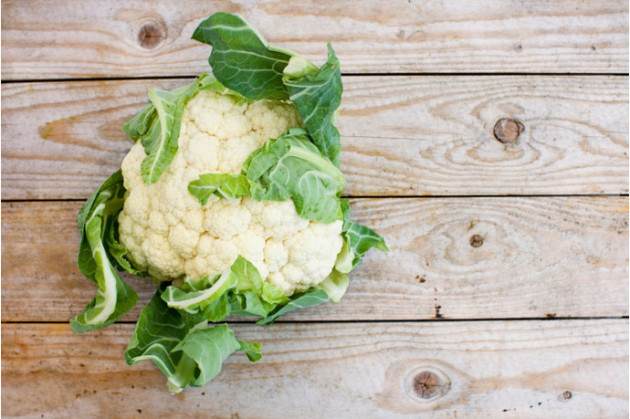
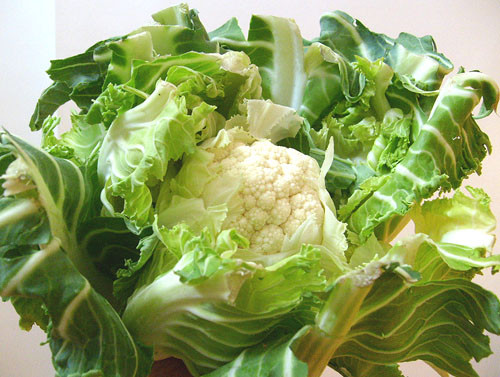
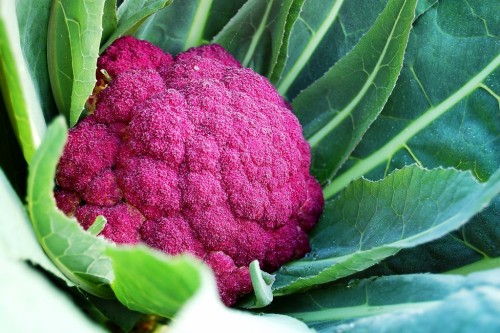
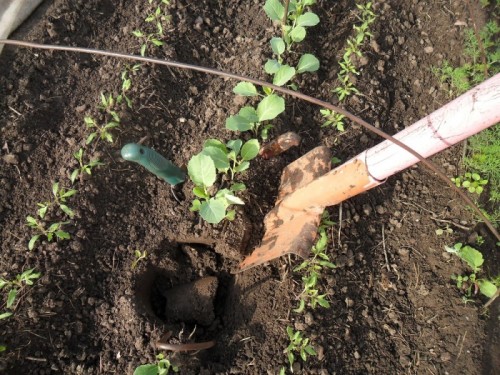
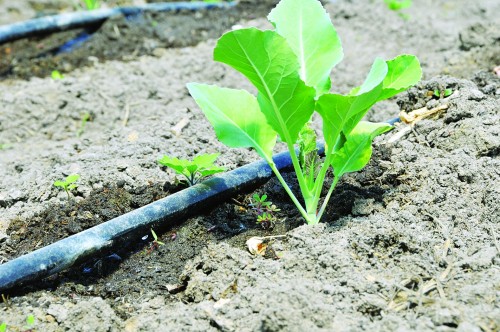
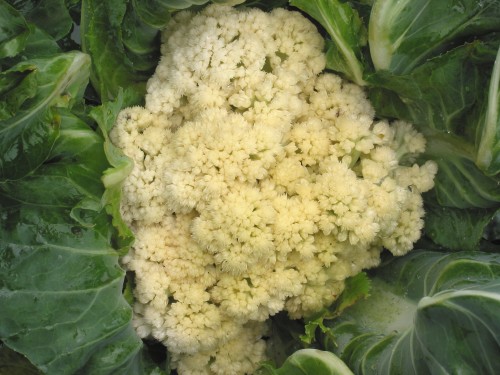
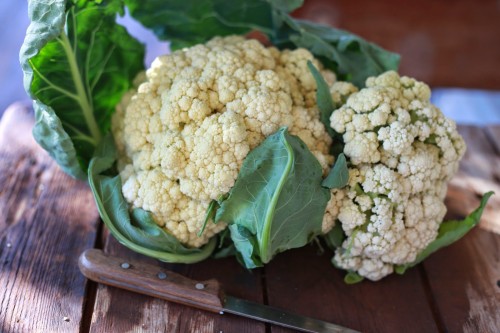
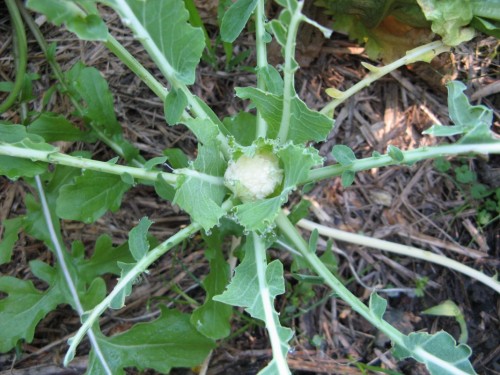
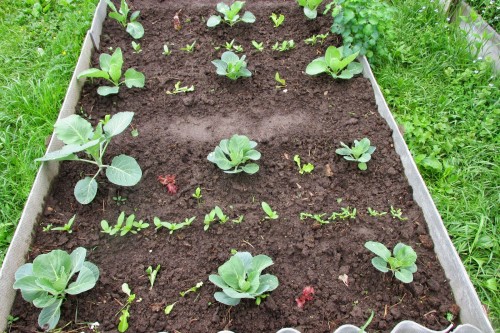
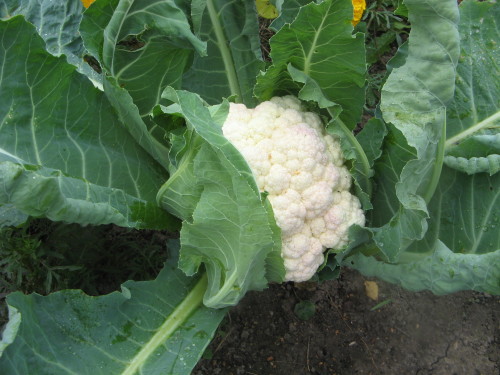
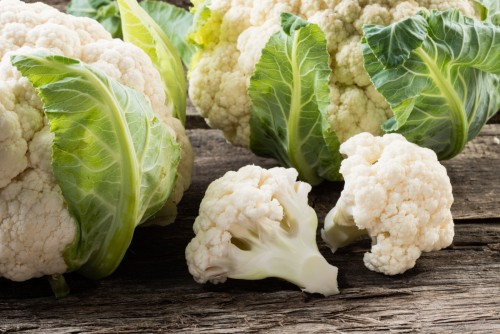












 Start a discussion ...
Start a discussion ...